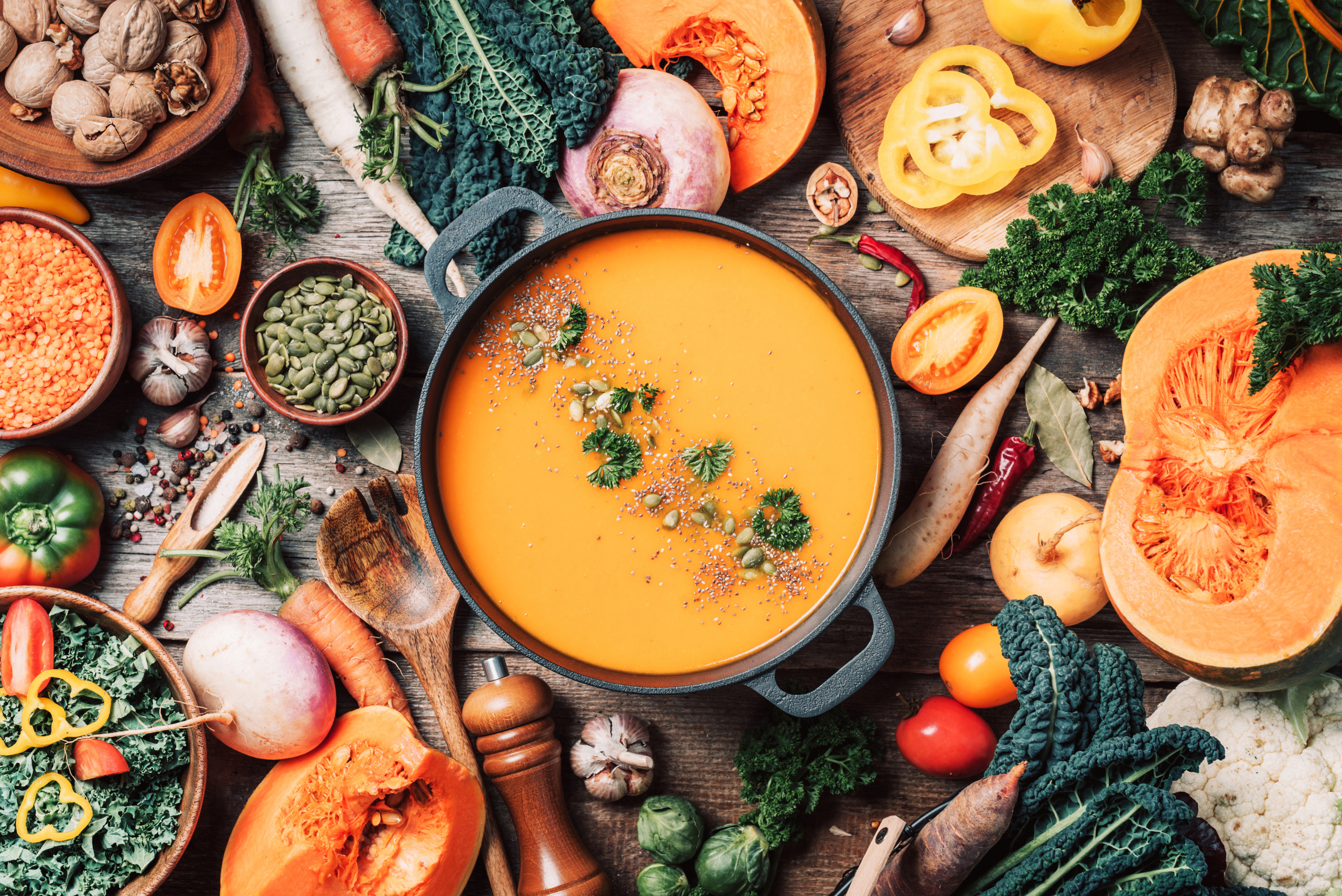
Seasonality in the Kitchen: Fall Flavors
10/24/2025
Cooking with the seasons is more than a culinary philosophy—it is a practical approach to flavor, technique, and sustainability. As the summer harvest fades and fall takes hold, chefs enter one of the most dynamic periods of the year for produce and pantry inspiration. Fall ingredients invite us to shift our cooking toward depth, warmth, and balance, with flavors that reflect the earth’s natural cycle of transition.
The Flavor Profile of Fall
Where summer is defined by bright acidity and freshness, fall is characterized by richness and grounding notes. Ingredients harvested in autumn often carry inherent sweetness—squash, root vegetables, and orchard fruits—balanced by the bitterness of brassicas and the earthiness of wild mushrooms. Together, they create a palette of flavors that lend themselves to both comforting rustic dishes and refined, layered preparations.
Spices are integral to fall cuisine, not merely as accents in desserts but as structural components of savory cooking. Cinnamon, nutmeg, clove, and allspice deepen flavor without overwhelming it. For instance, a pinch of nutmeg can sharpen a béchamel, while cinnamon can heighten the natural sweetness of roasted carrots. Used with restraint, these spices help define the season’s culinary identity.
Key Ingredients of the Season
- Squash and Pumpkin: Dense-fleshed and versatile, they provide a natural sweetness and creamy texture suited to roasting, pureeing, or stuffing.
- Root Vegetables: Carrots, beets, parsnips, and turnips benefit from dry heat applications, which enhance their caramelization and complexity.
- Orchard Fruits: Apples and pears straddle sweet and savory cooking, from cider reductions to accompaniments for pork or poultry.
- Brassicas: Brussels sprouts, cabbage, and cauliflower offer bitterness and crunch. Highheat roasting or charring maximizes their flavor potential.
- Wild Mushrooms: With umami-driven depth, varieties like porcini and chanterelles are suited to braises, risottos, and simple sautés.
Techniques That Define the Season
Fall cooking emphasizes methods that coax sweetness and build structure:
- Roasting develops caramelization and intensifies sugars.
- Braising transforms tougher cuts of meat and dense vegetables into tender, flavorful dishes.
- Poaching and Steeping allow apples, pears, and spices to infuse broths, syrups, and desserts.
- Fermentation and Preservation extend the life of seasonal produce, a practice rooted in culinary tradition.
The Broader Importance of Seasonality
Working with seasonal ingredients ensures optimal flavor, nutritional value, and sustainability. Ingredients harvested at peak ripeness require fewer interventions to taste their best. Beyond the plate, cooking seasonally supports local agriculture and reduces reliance on global supply chains. For chefs and operators, it provides an authentic connection to place and time—a way of grounding menus in the natural world.
Conclusion
Fall is a season of transition, and its flavors reflect that balance between brightness and depth. By embracing the ingredients and techniques that define this period, chefs can craft menus that feel both rooted and dynamic. Seasonality is not a constraint but a framework: it challenges us to innovate within the bounds of nature’s rhythm, ensuring our food reflects the season as it truly is.
